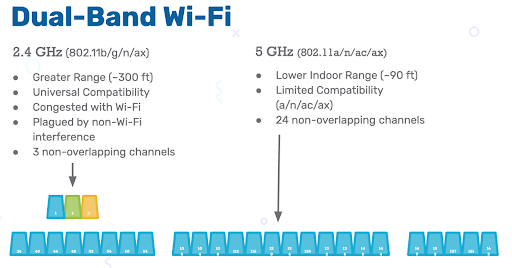

In fact, the coverage range is 4.9ghz to 5.8ghz, and the channel division is more diversified. The frequency range of 5GHz is undoubtedly much wider than that of 2.4ghz. Therefore, the actual channel occupied in the 2.4ghz band is a little more than the channel needed to be used, so the 2.4ghz band is more easily occupied.

For example, when the router occupies the channel 4 of the 2.4ghz band, it actually occupies a total of 5 channels from 2 to 6. 14, channel and channel spacing 13 12 MHZ, the rest of the interval between each channel are 5 MHZ, and the IEEE 802.11 standard, each signal taking up 20 MHZ bandwidth (actually 22 MHZ), the equivalent of five WLAN channel, so when the wireless router occupy 2.4 GHz frequency band of a channel, a total of five for the center with the channel used by WLAN channel will be incorporated into the router. The 2.4 GHz frequency band can be divided into 14 WLAN channels, in addition to no. So why don't we just remove the 2.4ghz band? Not really, otherwise there wouldn't be so many dual-band routers out there. Compared with the 2.4ghz band, the 5GHz band has larger bandwidth, lower latency and more stable network. As for the allocation of channels, it is up to each country to formulate its own policies. These channels are called WLAN channels, and the frequency corresponding to each channel is actually the central frequency of the channel. According to the provisions of IEEE 802.11 and its improved standards, the carrier frequency used in wireless LAN is divided into 2.4GHz band and 5GHz band, and each part is divided into several channels at a certain frequency interval.


 0 kommentar(er)
0 kommentar(er)
